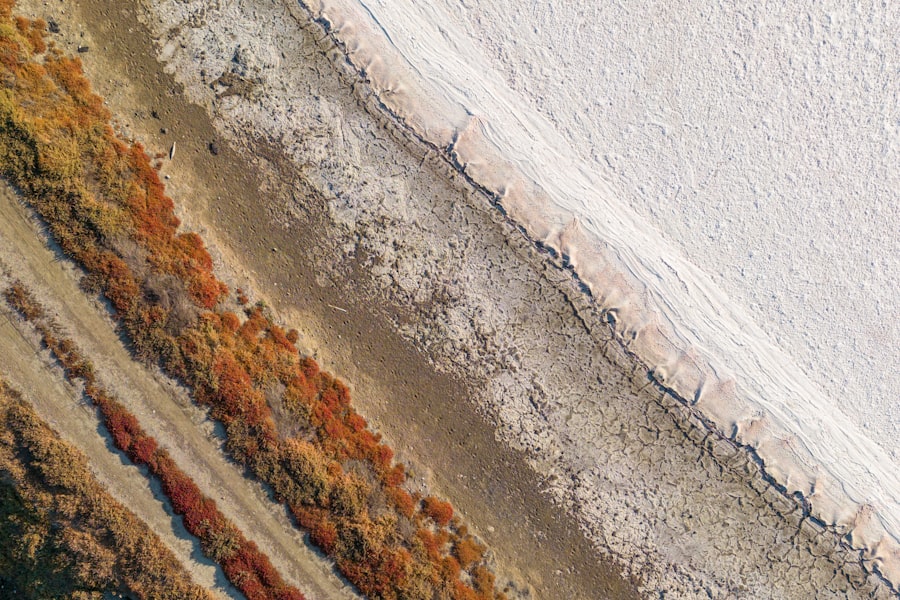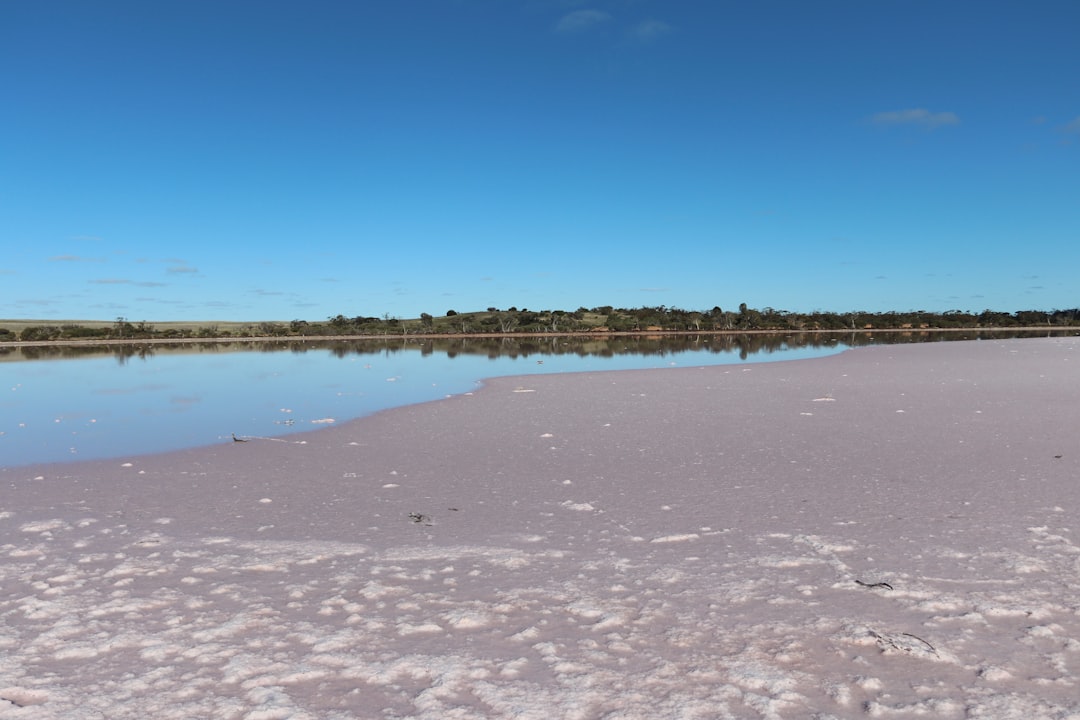The pink salt lakes of Las Coloradas, located in the Yucatán Peninsula of Mexico, have a fascinating origin that intertwines geological processes and climatic conditions. Formed over thousands of years, these lakes are a result of the evaporation of seawater in a region characterized by a unique combination of high temperatures and low rainfall. As the water evaporates, it leaves behind a concentration of minerals, primarily sodium chloride, which crystallizes into salt.
This natural phenomenon has created a stunning landscape that draws visitors from around the world. The geological history of the area is equally intriguing. The Yucatán Peninsula is primarily composed of limestone, which has shaped the region’s topography and hydrology.
Over time, tectonic movements and changes in sea levels have influenced the formation of these salt flats. The interplay between the land and water has resulted in a delicate balance that supports the vibrant ecosystem found in Las Coloradas today. Understanding the origins of these lakes not only enhances your appreciation for their beauty but also highlights the intricate relationship between nature and geography.
Key Takeaways
- The pink salt lakes of Las Coloradas were formed through the process of salt extraction, which has been a tradition in the region for centuries.
- Las Coloradas is home to a unique ecosystem, with the lakes providing a habitat for various species of birds and other wildlife.
- The process of salt extraction at Las Coloradas involves the use of evaporation ponds, where seawater is left to evaporate, leaving behind the salt deposits.
- The vibrant pink color of the lakes is due to the presence of algae and brine shrimp, which thrive in the high salinity of the water.
- The wildlife and flora surrounding the pink salt lakes include flamingos, herons, and mangroves, creating a diverse and picturesque landscape.
The Unique Ecosystem of Las Coloradas
Las Coloradas is not just a visual spectacle; it is also home to a unique ecosystem that thrives in its saline environment. The high salinity levels create a habitat that supports specialized organisms, including various species of microorganisms, algae, and crustaceans. These organisms have adapted to survive in extreme conditions, contributing to the lakes’ distinctive pink hue.
The presence of these microorganisms is crucial, as they form the foundation of the food chain, supporting a variety of wildlife that depends on them for sustenance. In addition to microorganisms, Las Coloradas is a sanctuary for numerous bird species, particularly flamingos. These elegant birds are drawn to the area due to the abundance of food sources available in the salt flats.
As you explore the lakes, you may witness flocks of flamingos wading through the shallow waters, their vibrant pink feathers contrasting beautifully with the landscape. This unique ecosystem is a testament to nature’s resilience and adaptability, showcasing how life can flourish even in seemingly inhospitable environments.
The Process of Salt Extraction at Las Coloradas

The process of salt extraction at Las Coloradas is a fascinating blend of traditional methods and modern techniques. Local salt producers have honed their craft over generations, utilizing the natural evaporation process to harvest salt efficiently. The extraction begins with diverting seawater into shallow ponds, where it is allowed to evaporate under the intense sun.
As the water level decreases, salt crystals begin to form on the bottom of the ponds. Once the salt has crystallized sufficiently, workers carefully rake it from the bottom and pile it into mounds for further drying. This method not only preserves the quality of the salt but also minimizes environmental impact.
The harvested salt is then processed and packaged for distribution, often finding its way into kitchens around the world. Witnessing this process firsthand can deepen your understanding of the labor and dedication involved in producing this essential mineral while also highlighting the importance of sustainable practices in resource management.
The Vibrant Pink Color of the Lakes
| Lake Name | Location | Cause of Pink Color | Intensity of Pink |
|---|---|---|---|
| Lake Hillier | Australia | Presence of algae and bacteria | Very vibrant |
| Lake Retba | Senegal | High salt content and Dunaliella salina algae | Variable intensity |
| Lake Natron | Tanzania | High levels of sodium carbonate and other minerals | Intense pink |
The striking pink color of Las Coloradas is one of its most captivating features, drawing photographers and nature enthusiasts alike. This vibrant hue is primarily due to the presence of carotenoid pigments produced by certain types of algae and microorganisms that thrive in high-salinity environments. As these organisms flourish, they create a stunning visual display that changes with the seasons and time of day.
The intensity of the pink color can vary based on several factors, including water temperature, salinity levels, and sunlight exposure. During hotter months, when evaporation rates are higher, you may notice an even more vivid shade of pink as the concentration of these pigments increases. This dynamic aspect of Las Coloradas adds an element of surprise for visitors, as each visit can reveal a different palette of colors.
Understanding the science behind this phenomenon enhances your appreciation for the natural beauty surrounding you.
Wildlife and Flora Surrounding the Pink Salt Lakes
The area surrounding Las Coloradas is teeming with diverse wildlife and flora that thrive in this unique environment. While the lakes themselves are home to various microorganisms and birds, the surrounding landscape supports an array of plant species adapted to saline conditions. Salt-tolerant plants, such as mangroves and halophytes, play a crucial role in stabilizing the ecosystem by preventing erosion and providing habitat for various animals.
As you explore the region, keep an eye out for other wildlife that calls this area home. In addition to flamingos, you may encounter herons, egrets, and other migratory birds that flock to Las Coloradas for its rich food sources. The interplay between flora and fauna creates a vibrant tapestry of life that showcases nature’s ability to adapt and thrive in challenging conditions.
Observing this biodiversity can deepen your connection to the environment and inspire a greater appreciation for conservation efforts.
Visiting Las Coloradas: What to Expect

If you’re planning a visit to Las Coloradas, prepare yourself for an unforgettable experience filled with breathtaking sights and unique encounters. The journey to these pink salt lakes often involves traveling through picturesque landscapes dotted with traditional Mexican villages and lush vegetation. Upon arrival, you’ll be greeted by expansive views of shimmering pink waters framed by white salt flats—a sight that feels almost surreal.
While exploring Las Coloradas, take your time to wander along the shores and capture stunning photographs that showcase the lakes’ vibrant colors. Be sure to bring plenty of water and sunscreen, as temperatures can soar during the day. Additionally, consider visiting during sunrise or sunset when the light casts a magical glow over the landscape, enhancing its beauty even further.
Engaging with local guides can also enrich your experience, as they can share insights about the area’s ecology and history that you might not discover on your own.
Conservation Efforts and Sustainability at Las Coloradas
As awareness grows about the ecological significance of Las Coloradas, conservation efforts have become increasingly important to protect this unique environment. Local organizations and government agencies are working together to promote sustainable practices that balance economic development with environmental preservation. These initiatives aim to ensure that future generations can continue to enjoy the beauty and biodiversity of Las Coloradas.
Sustainability efforts include monitoring water quality, protecting wildlife habitats, and promoting responsible tourism practices among visitors. By educating tourists about the importance of preserving this delicate ecosystem, stakeholders hope to foster a sense of stewardship that encourages everyone to play a role in protecting Las Coloradas. As you visit this remarkable destination, consider how your actions can contribute to its conservation—whether it’s by following designated paths or supporting local businesses that prioritize sustainability.
The Cultural and Historical Significance of Las Coloradas
Beyond its natural beauty, Las Coloradas holds cultural and historical significance for local communities. The region has been inhabited for centuries by various indigenous groups who have relied on its resources for sustenance and livelihood. The traditional practices associated with salt extraction have been passed down through generations, reflecting a deep connection between people and their environment.
Today, Las Coloradas serves as a reminder of this rich cultural heritage while also attracting visitors from around the globe who seek to experience its wonders firsthand. Engaging with local communities can provide valuable insights into their history and traditions, fostering a greater understanding of how they have adapted to their surroundings over time. By appreciating both the natural and cultural aspects of Las Coloradas, you can gain a more holistic perspective on this extraordinary destination.
In conclusion, Las Coloradas is more than just a stunning visual spectacle; it is a complex ecosystem with deep cultural roots and significant ecological importance. From its origins as a geological marvel to its vibrant wildlife and ongoing conservation efforts, every aspect contributes to its allure. As you plan your visit or reflect on your experiences there, remember that you are part of a larger narrative—one that celebrates nature’s beauty while recognizing our responsibility to protect it for future generations.
